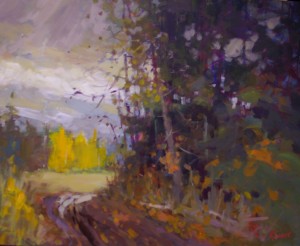Dear Artist,
A burgeoning screenwriter recently told me about a side-hustle in her industry called, “pay to play.” For $30, a writer can book 10 minutes of Skype-time with a producer or distributer looking for new projects. After narrowing her pitch to seven minutes with three minutes for questions, her Skype ends abruptly with, “thanks!” and she awaits feedback by email. New to this system, my friend has already received a follow-up request from a global network for her latest script. When I asked how she knew about “pay to play,” she told me it’s a common path for actors looking to audition without an agent, or if their agent can’t get a meeting with a desired casting director. “Sometimes it works — I have colleagues who’ve been successful with this method,” she said. “And it’s often the only way to get in front of certain people.”
If your nose is crinkled, consider the art world’s equivalent — the benevolent, food-chain staple, “call for entry.” For a stomachable fee, you can upload a handful of digital images to be looked over by a vetted slew of curators, jurors or gallerists. Public art, competitions, fundraisers, community shows, thematic one-offs, artist’s groups, even representation by non-profit or commercial galleries in hot spots are up for grabs. Extra images will cost extra dough, and you’ll need to upload a PDF of your CV. In comparison to a decade ago, when preparing a stickered slide pack, self-addressed, postage-paid return envelope and money order was standard for a chance at breaking the sound barrier, today’s online submissions are cheap and spontaneous. Websites that store your images, allowing multiple applications with one click, send email updates and keep track of submissions, make it all but irresistible.
“Some people say it’s a cash-grab for casting agents,” my writer-friend offered, as caveat. “Schedule ten 10-minute Skypes per week and you’ve made a few hundred bucks.” “Get a hundred online submissions for an art show and you’ve made three grand,” I replied, thinking it a route for an aspiring curator, perhaps. I also quietly recounted what I’d spent on the slide packs and bubble-lopes of my twenties, remembering the epic, bloated binder of typed-on-letterhead rejections I only recently bulk-shredded at Office Depot. Time to travel light.
I went home and perused the online art classifieds: Photographs of water, travel drawings, non-profit seaside community show, watercolour society, glass, New York Chelsea, International art fair, The Appalachian Pastel Society, hospital mural, foreign gallery roster, juried pop-up, the best painting of a sheep dog. My finger twitched and before long, I was pulling at the penny slot.
Sincerely,
Sara
PS: “I’ve learned that opportunities are never lost; someone will take the ones you miss.” (Andy Rooney)
Esoterica: If you’re thinking of playing, you might browse the bulk entry site CallForEntry.org, or the bona fide bible for jobs, calls, studio spaces, awards and residencies for artists, the New York Foundation for the Arts website at NYFA.org. Established in 1971 as an independent organization for artists in New York state, in 2009 the NYFA expanded to include services for artists across the United States and internationally. Among the dreams dangled are invitations from all over the world, just waiting for your reply. “Anything is possible. It’s all about risks, deliberate risks.” (Helen Frankenthaler)
Download the new audio book, The Letters: Vol. 1 and 2, narrated by Dave Genn, here. Proceeds of sales contribute to the production of The Painter’s Keys.
“For us, there is only the trying. The rest is not our business.” (T.S. Eliot)
Featured Artist
My art represents an artistic journey that has been on-going for more than thirty-five years with help and guidance from many wonderful artists. Now, with years of plein-air painting experience, study and solo exhibitions, I believe that my current work has reached its highest level, reflecting the depth of my absorption in the wonder and beauty of the world around me. I have learned that, as an artist, I will never stop looking for better ways to express my feelings in art and that struggling to more fully understand myself is integral to my painting; a philosophy that was part of every workshop I taught. Still is.









15 Comments
This is now common in the poetry world as well. I was recently approached at a poetry convention and told, “And we don’t even charge for submissions.” I had to laugh. They want me to pay for them to read my work, which they will either reject outright or print for free in a magazine no one but their aunts and cousins will read. It’s appalling, but that’s the way it is. We have too many producers of art, in all its many forms, and not enough consumers–in my case, not enough readers of poetry, willing to spend money on a book and sit down with it in a quiet, iPhone free space and devote and hour or two to read it and be moved by it. It’s all about the hustle.
Forgive me. I’m showing my age.
It’s true! We are developing the “Walking Dead.” I teach school and rarely do I have the joy of discussing a book with a student. Not these days. Everyone is in a hurry. Yesterday I read a poem about “Take time to stand and stare.” I replied, “Don’t just do something, sit there.” Namaste my friend.
Sara, Thank you for this information, the Helen Frankenthaler artworks and the quotes by Andy Rooney and T.S. Eliot. Helpful! Interesting!
Excellent missive.
Pay for play is NOT GOOD in editorial… something we try to avoid at all costs, but continues to plague publications who say “buy an ad, you get an article.” or who at least insinuate. The reason the practice is bad is because people with money may not be people with talent, thus collectors or readers are being told something is good, when it is not. It confuses the marketplace and is, I think, deceptive.
On the other hand, what you’re talking about is a creative way to get noticed. Why not, as an actor, spend some $ to gain a chance or an advantage.
Its the same for art competitions. If an expensive entry results in you getting noticed by a prominent gallery owner or artist, it could help your career, and if you win a category or a monthly prize, you have fuel for your PR machine and one more great thing to talk about on your resume. And of course if you win the big $ its pretty remarkable. In our case we give the cover of the magazine (PleinAir) and $15,000, and we promote it heavily, which helps promote careers.
What I find most remarkable is how many new unknown artists end up winning and then become well known. It makes it all worthwhile.
You are doing a FINE job continuing in your father’s tradition and I know he would be proud.
Work hard. Follow only your bliss. Wait for no one but yourself. Give to no one your dreams. Carry that heavy load as far as you can. All glory is best felt by nourishing your soul and in the pursuit of it, you will find happiness. It is most important what you feel about your own work. Ego depletes, and leaves no time for what is important, the work.
Thank you, Sharon, for this always-timely reminder of What Really Matters.
Well said! Good advice.
Thank you for this truth.
Scams, scams, scams, one and all — will people NEVER learn? Artists of all kinds are ridiculously easy to exploit and manipulate. Stop falling for it. Somebody is profiting, for sure — but it’s never going to be you.
Since the digital age started in the mid nineties, I felt more in control of my sales, marketing strategy and ability to be part of local gallery exposure. Nowadays, what should be easier appears to be much more of a convoluted mess. No control over sales and marketing. I finally realized I was chasing nothing but air with few results. I came to the conclusion that it is more important to create than to follow the seemingly time consuming efforts to get my work out there. My approach has allowed for renewed, authentic creativity. I now wait for opportunities rather than waste my valuable time on the search. Those opportunities seem to appear and my job mows to choose which one to grab hold of.
Thank you, Sara! Your words are true and not many artists will put that out there on their sleeve. Good for you. We, as artists, need to know that we’re not alone in this realm of creativity and exposure.
I didn’t know this was happening, but then, Im an old man and it is no longer relevant to me. Reflecting on this, I think it may be worth a try for young artists. Yes , there may be scammers, but the imperative for any artist (after working to produce good art) is to get noticed. That has always been a hit-or-miss exercise, with huge amounts of wasted energy – and money – but the committed artist will get there in the end. There are always ways and means.
Akin to this topic (in the sense that the world moves very quickly) I was in the Apple Store yesterday to buy an iPad Pro. The young woman who sold me the device happened to be an artist and she showed some of the wonderful techniques violable. WOW! She mentioned that she doesn’t spend amy money on paint or painting supports to create her art. It is a ‘brace new world!’
I think it is pretty standard practice. I have always had to pay to enter a juried exhibition. It is less than an Art Fair where you have to pay $150+ for your exhibition space, plus the equipment to exhibit. It’s a good way to get exposure and build up your CV.
I think you may have overshot the concept of paying entry fees for exhibitions. The majority of those juried shows (that I have entered) are legitimate, especially the local, state and regional exhibits. They offer opportunities for exposure and seeing how one’s art is perceived by a juror. I have had excellent results with this level of juried exhibitions but almost none with national and international shows. Being accepted can add up to an addition to you exhibition record and if you pay and loose, call it the cost of tuition.
I was recently offered the “opportunity” to subscribe to list of stylists, pr people and managers to celebrities to get my jewelry worn in public. Only $47 a month plus the cost of the free jewelry. Thanks for a very opportune article.
Paid call for entries are neither inherently good or bad. They just are. I don’t have a formal art education, but did put together a fairly serious, self-directed art education together for myself, so when I felt like it was time to start showing, these types of shows & competitions were really important to me. Did a famous gallerist see my work and invite me to join their stable? No, but I learned a lot. And many people, all kinds of people, saw my work who otherwise wouldn’t have. Some pieces sold, too. Do your research. Consider the venue, the organization, and the juror. And, as always, know thyself: are you going to be crushed or pissed off if you don’t get in? Through the process of participating in these types of shows, I built my knowledge, skill, and confidence. Now I belong to a co-op gallery that I am proud to be associated with, The Oxbow Gallery, Northampton, MA, USA, and rarely enter these kinds of shows.